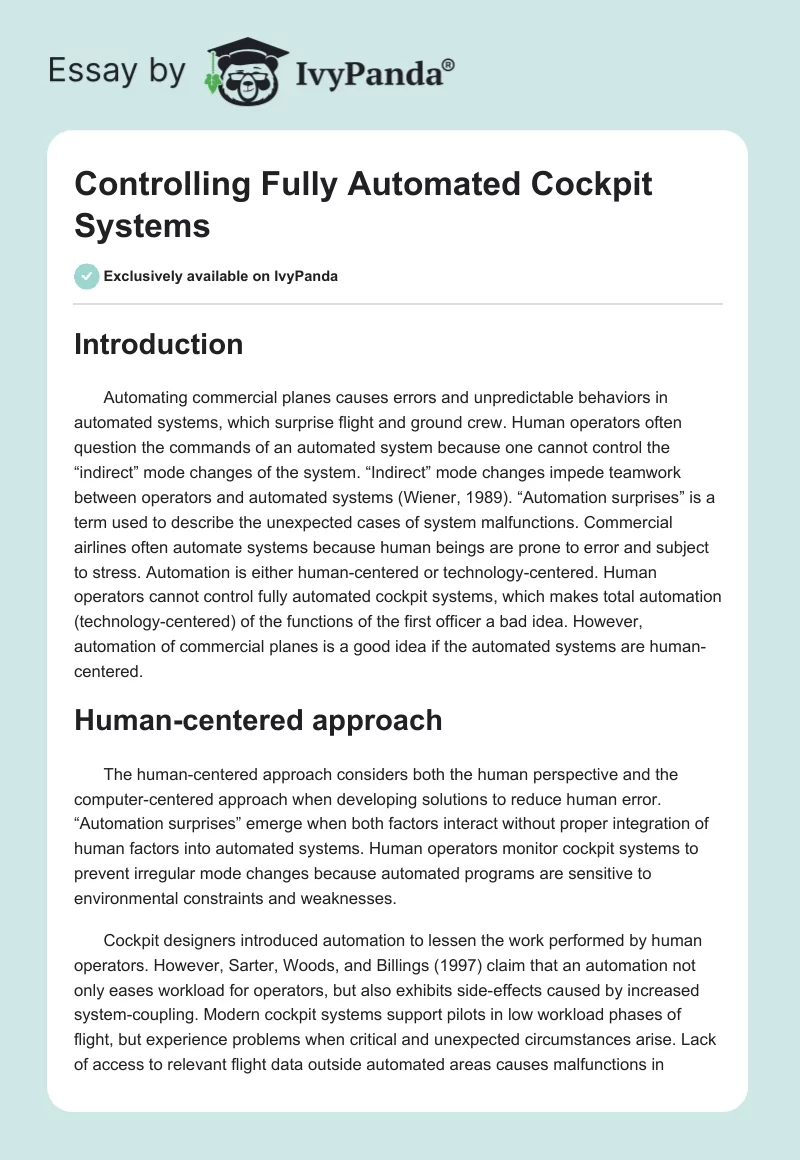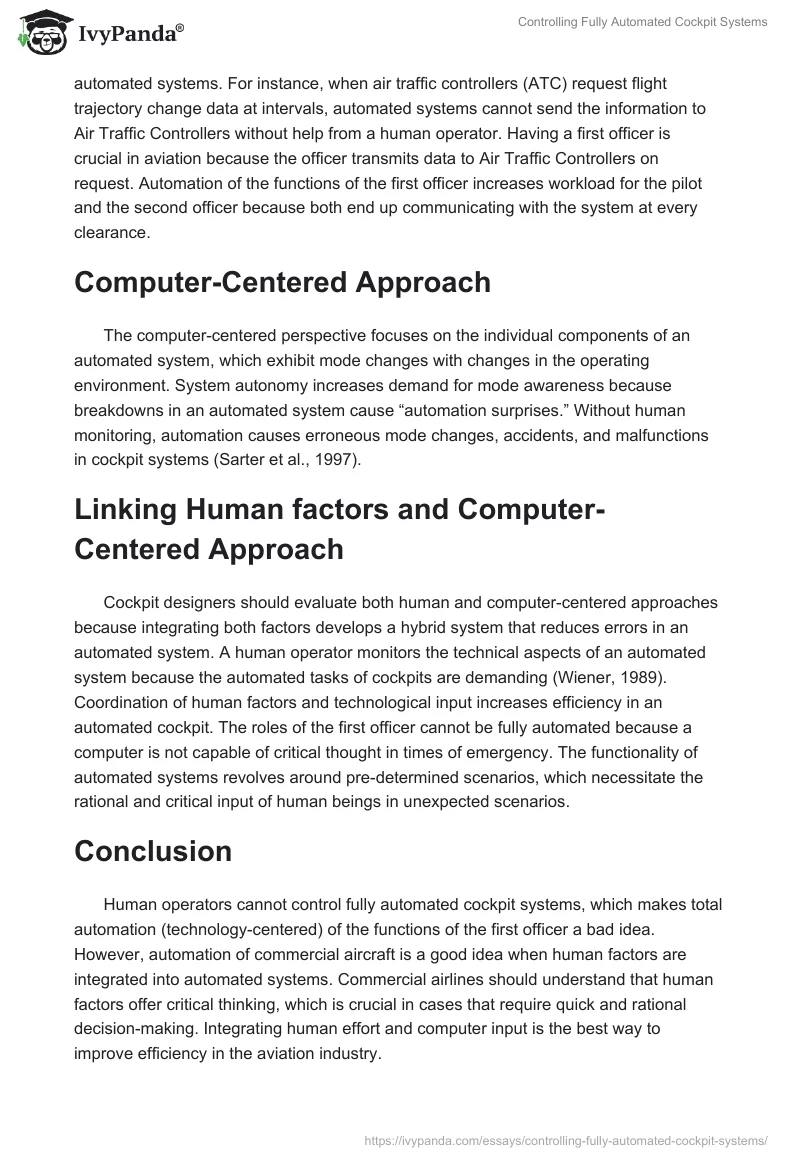Introduction
Automating commercial planes causes errors and unpredictable behaviors in automated systems, which surprise flight and ground crew. Human operators often question the commands of an automated system because one cannot control the “indirect” mode changes of the system. “Indirect” mode changes impede teamwork between operators and automated systems (Wiener, 1989). “Automation surprises” is a term used to describe the unexpected cases of system malfunctions. Commercial airlines often automate systems because human beings are prone to error and subject to stress. Automation is either human-centered or technology-centered. Human operators cannot control fully automated cockpit systems, which makes total automation (technology-centered) of the functions of the first officer a bad idea. However, automation of commercial planes is a good idea if the automated systems are human-centered.
Human-centered approach
The human-centered approach considers both the human perspective and the computer-centered approach when developing solutions to reduce human error. “Automation surprises” emerge when both factors interact without proper integration of human factors into automated systems. Human operators monitor cockpit systems to prevent irregular mode changes because automated programs are sensitive to environmental constraints and weaknesses.
Cockpit designers introduced automation to lessen the work performed by human operators. However, Sarter, Woods, and Billings (1997) claim that an automation not only eases workload for operators, but also exhibits side-effects caused by increased system-coupling. Modern cockpit systems support pilots in low workload phases of flight, but experience problems when critical and unexpected circumstances arise. Lack of access to relevant flight data outside automated areas causes malfunctions in automated systems. For instance, when air traffic controllers (ATC) request flight trajectory change data at intervals, automated systems cannot send the information to Air Traffic Controllers without help from a human operator. Having a first officer is crucial in aviation because the officer transmits data to Air Traffic Controllers on request. Automation of the functions of the first officer increases workload for the pilot and the second officer because both end up communicating with the system at every clearance.
Computer-Centered Approach
The computer-centered perspective focuses on the individual components of an automated system, which exhibit mode changes with changes in the operating environment. System autonomy increases demand for mode awareness because breakdowns in an automated system cause “automation surprises.” Without human monitoring, automation causes erroneous mode changes, accidents, and malfunctions in cockpit systems (Sarter et al., 1997).
Linking Human factors and Computer-Centered Approach
Cockpit designers should evaluate both human and computer-centered approaches because integrating both factors develops a hybrid system that reduces errors in an automated system. A human operator monitors the technical aspects of an automated system because the automated tasks of cockpits are demanding (Wiener, 1989). Coordination of human factors and technological input increases efficiency in an automated cockpit. The roles of the first officer cannot be fully automated because a computer is not capable of critical thought in times of emergency. The functionality of automated systems revolves around pre-determined scenarios, which necessitate the rational and critical input of human beings in unexpected scenarios.
Conclusion
Human operators cannot control fully automated cockpit systems, which makes total automation (technology-centered) of the functions of the first officer a bad idea. However, automation of commercial aircraft is a good idea when human factors are integrated into automated systems. Commercial airlines should understand that human factors offer critical thinking, which is crucial in cases that require quick and rational decision-making. Integrating human effort and computer input is the best way to improve efficiency in the aviation industry.
References
Sarter, N. B., Woods, D. D., & Billings, C. E. (1997). Automation Surprises. Human Computer Interaction Lab. Web.
Wiener, E. L. (1989). Human factors of advanced technology (“glass cockpit”) transport aircraft. Moffett Field, California: National Aeronautics and Space Administration, Ames Research Center.


